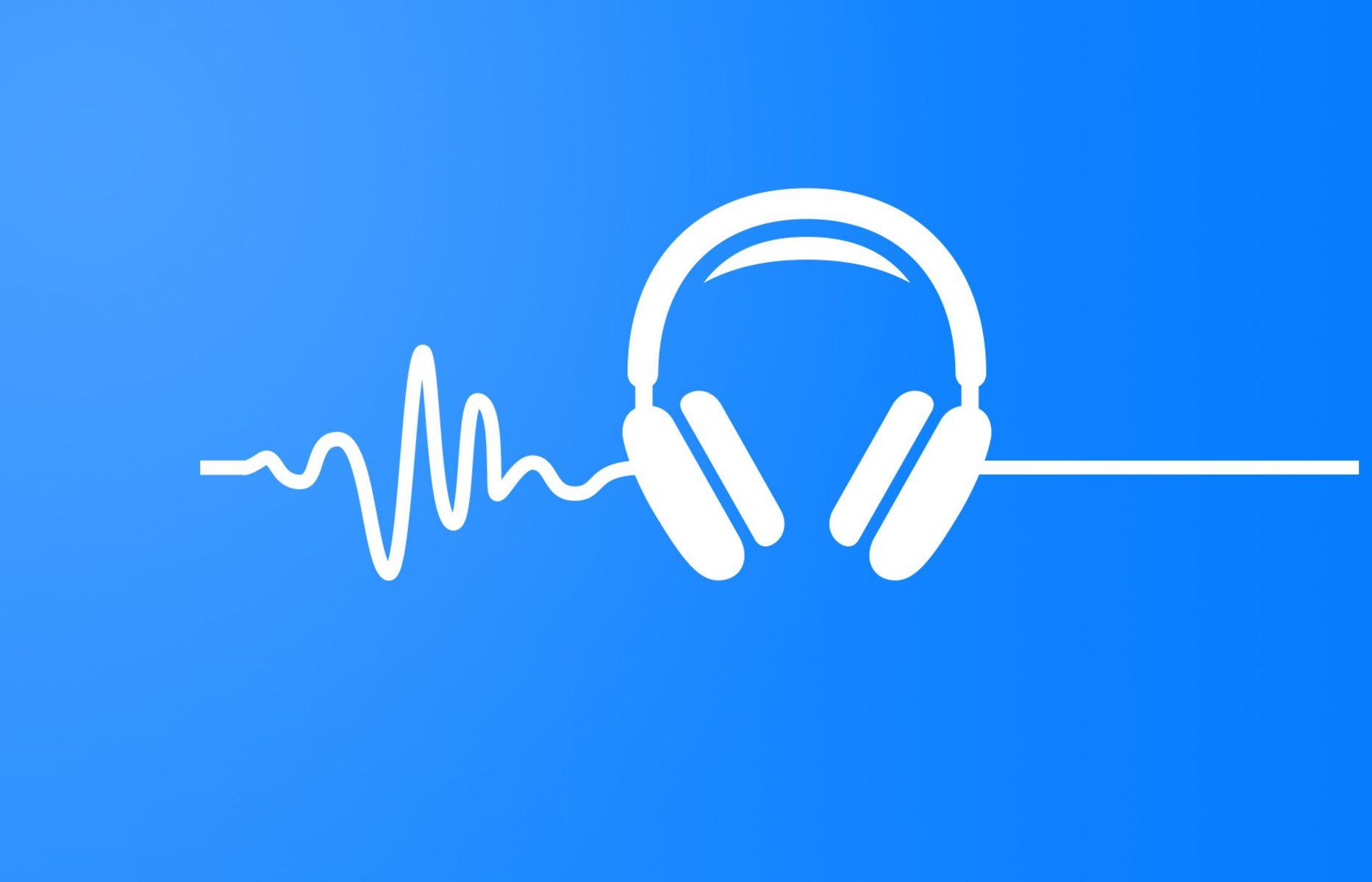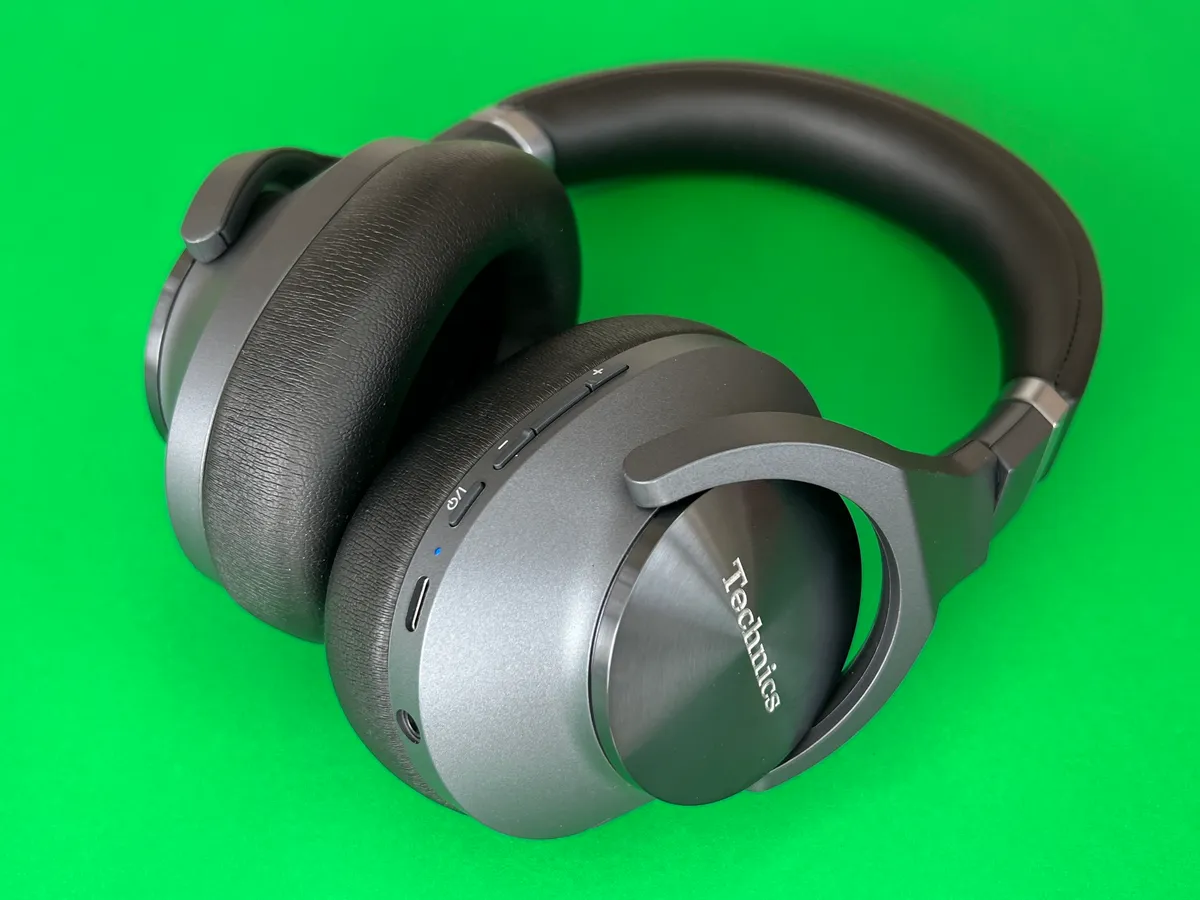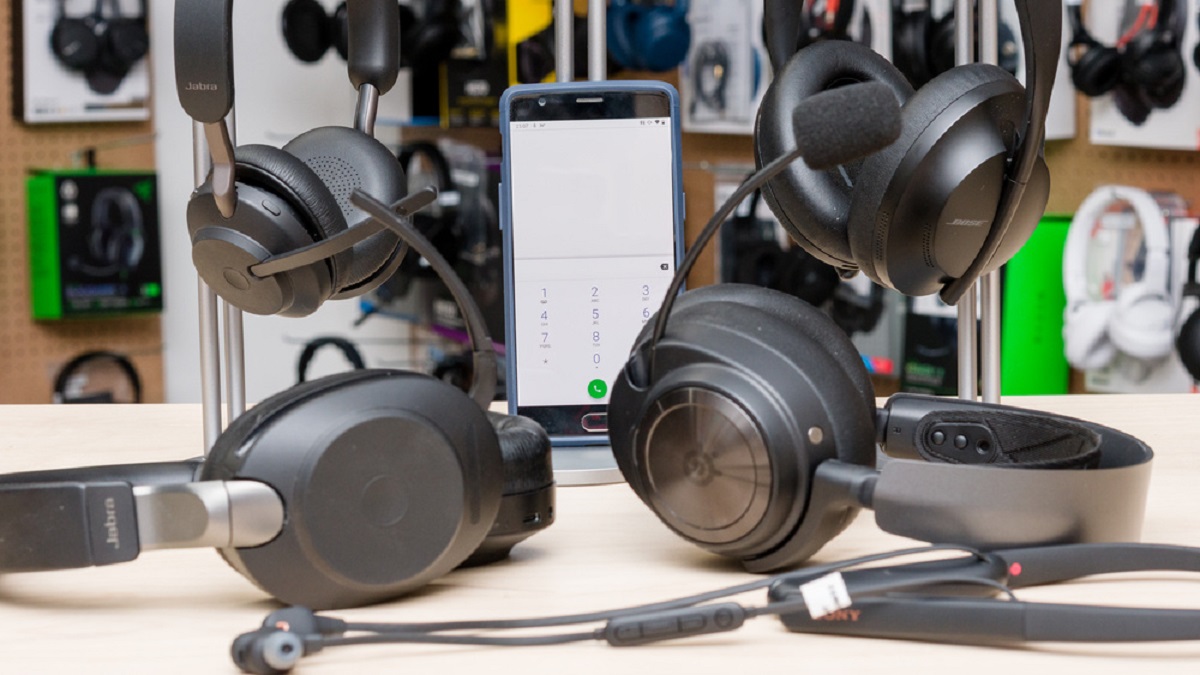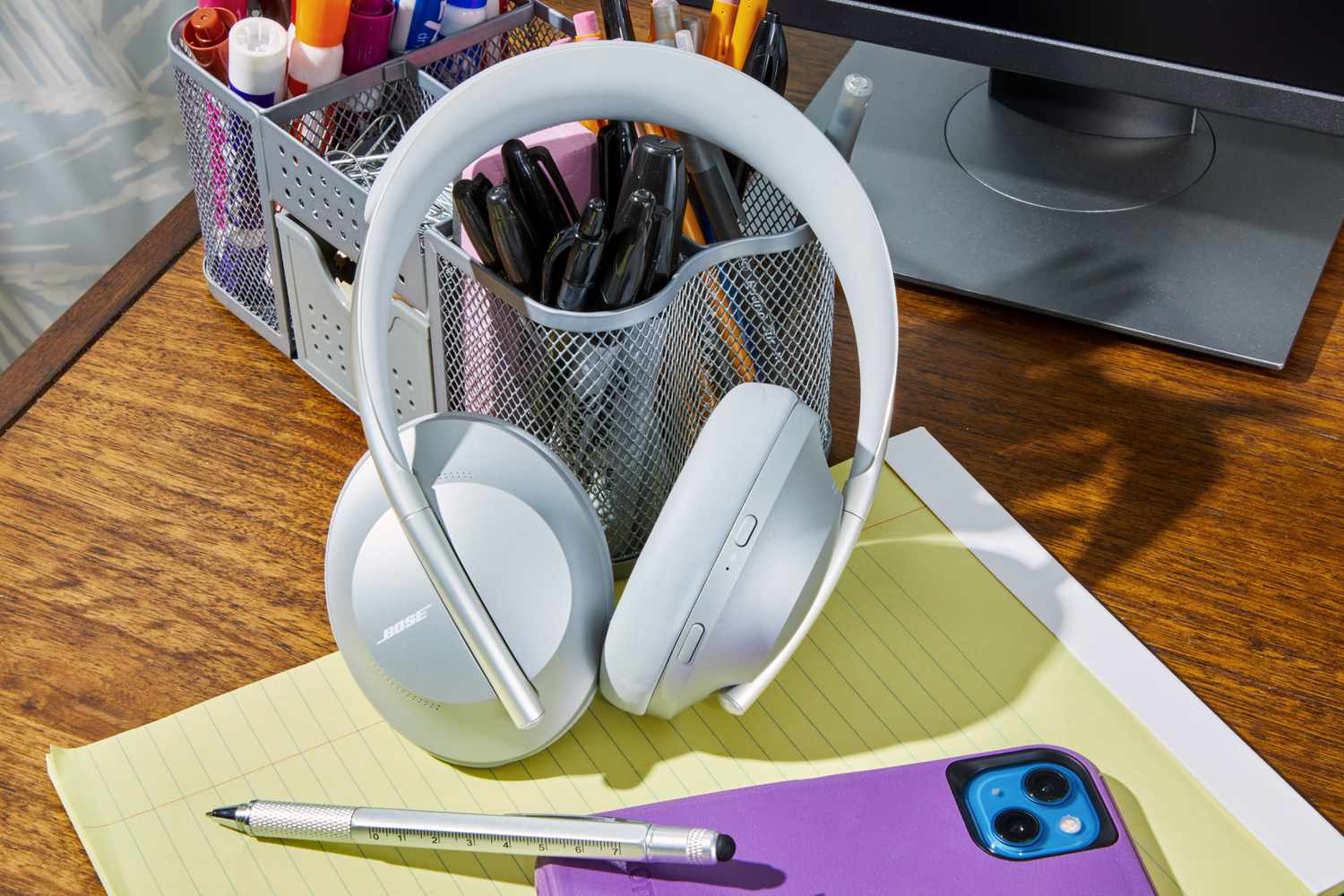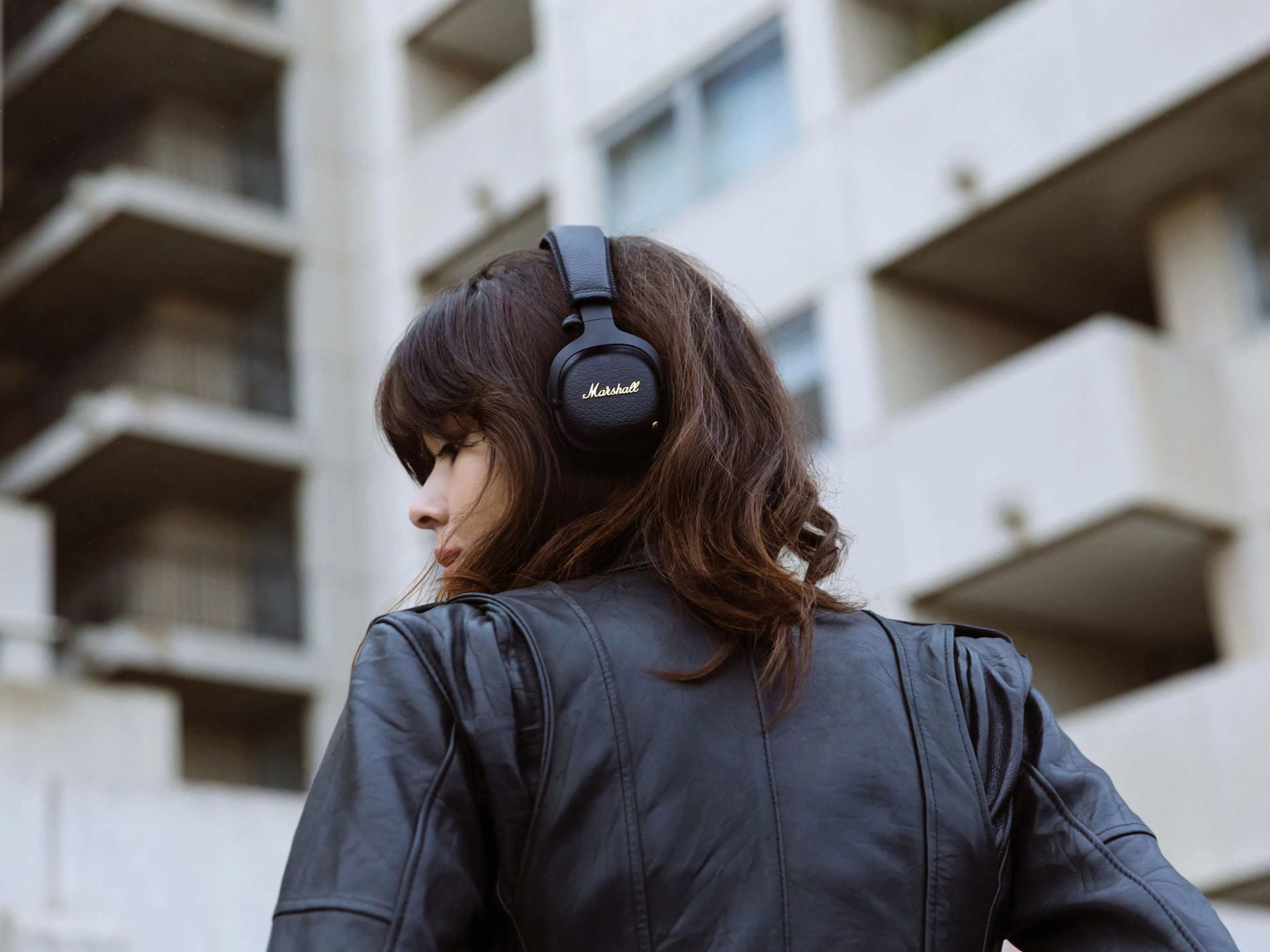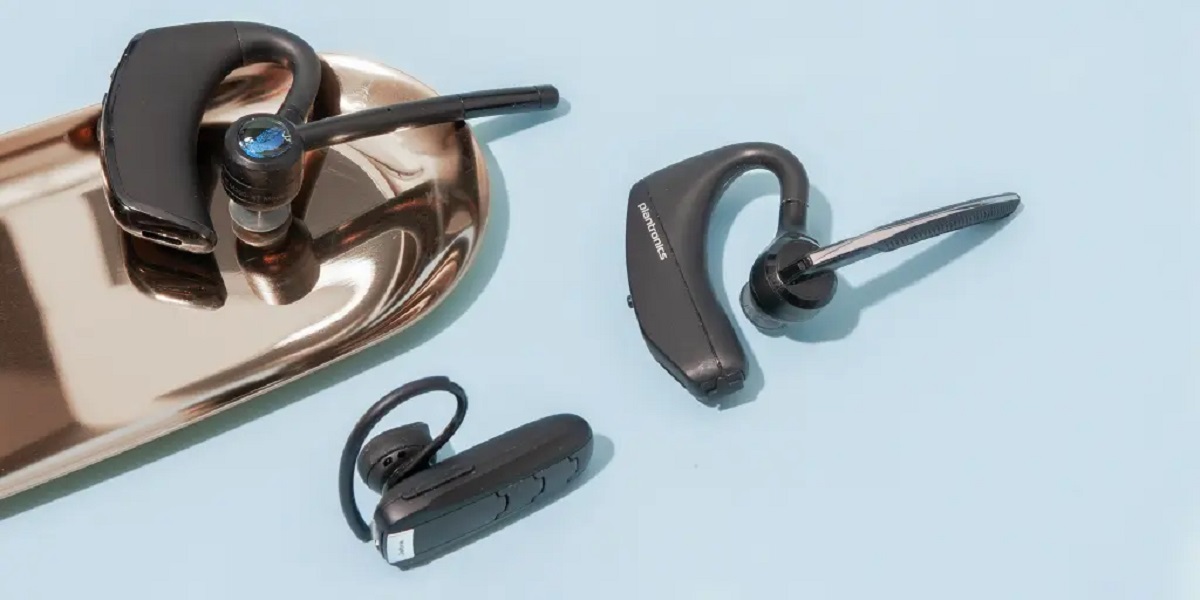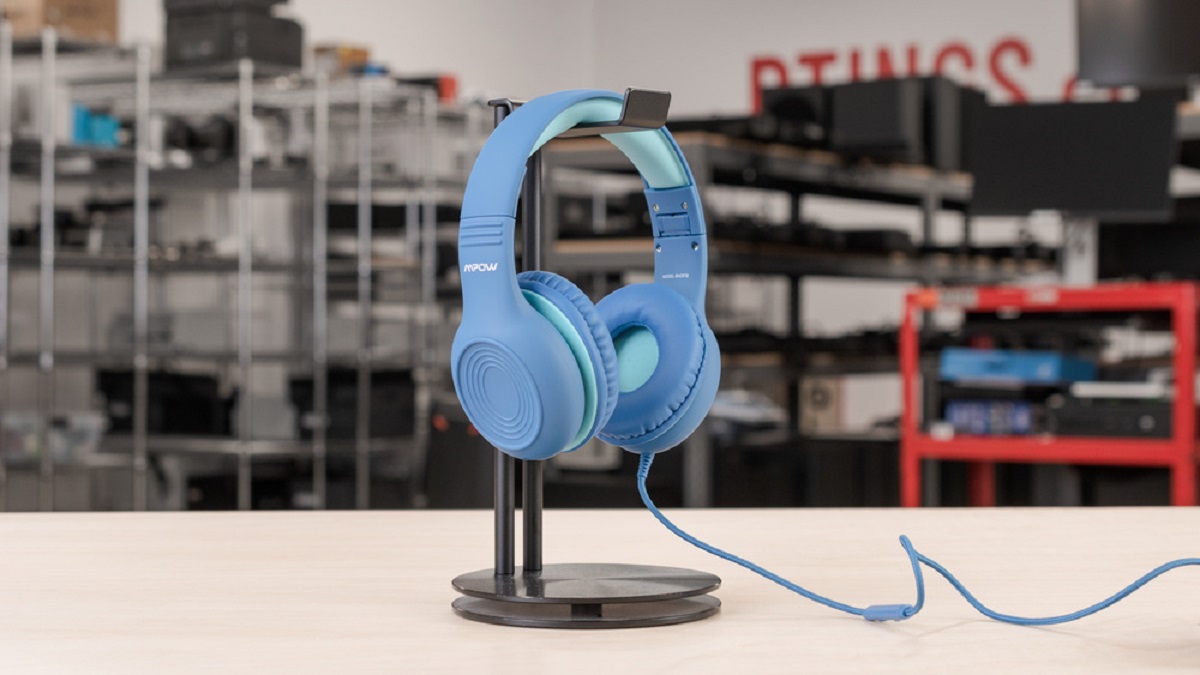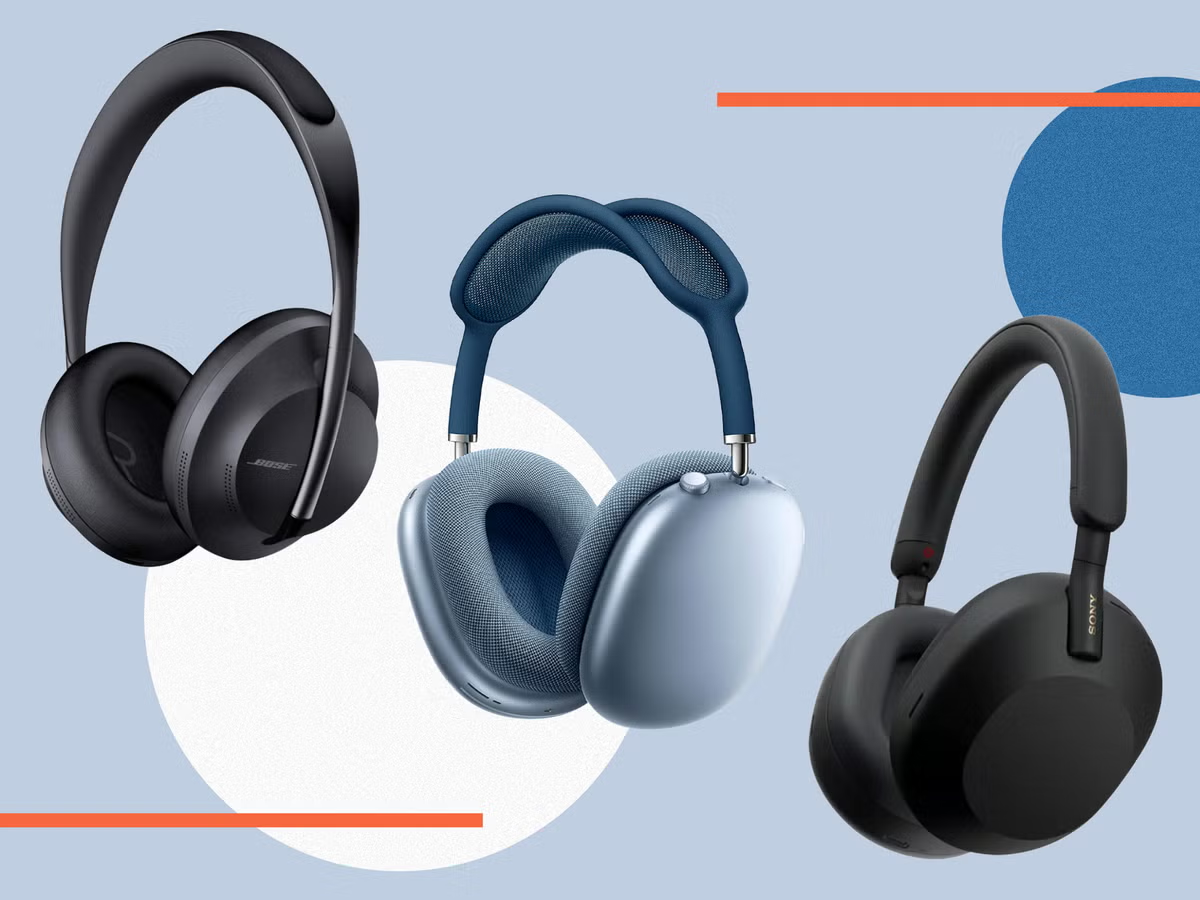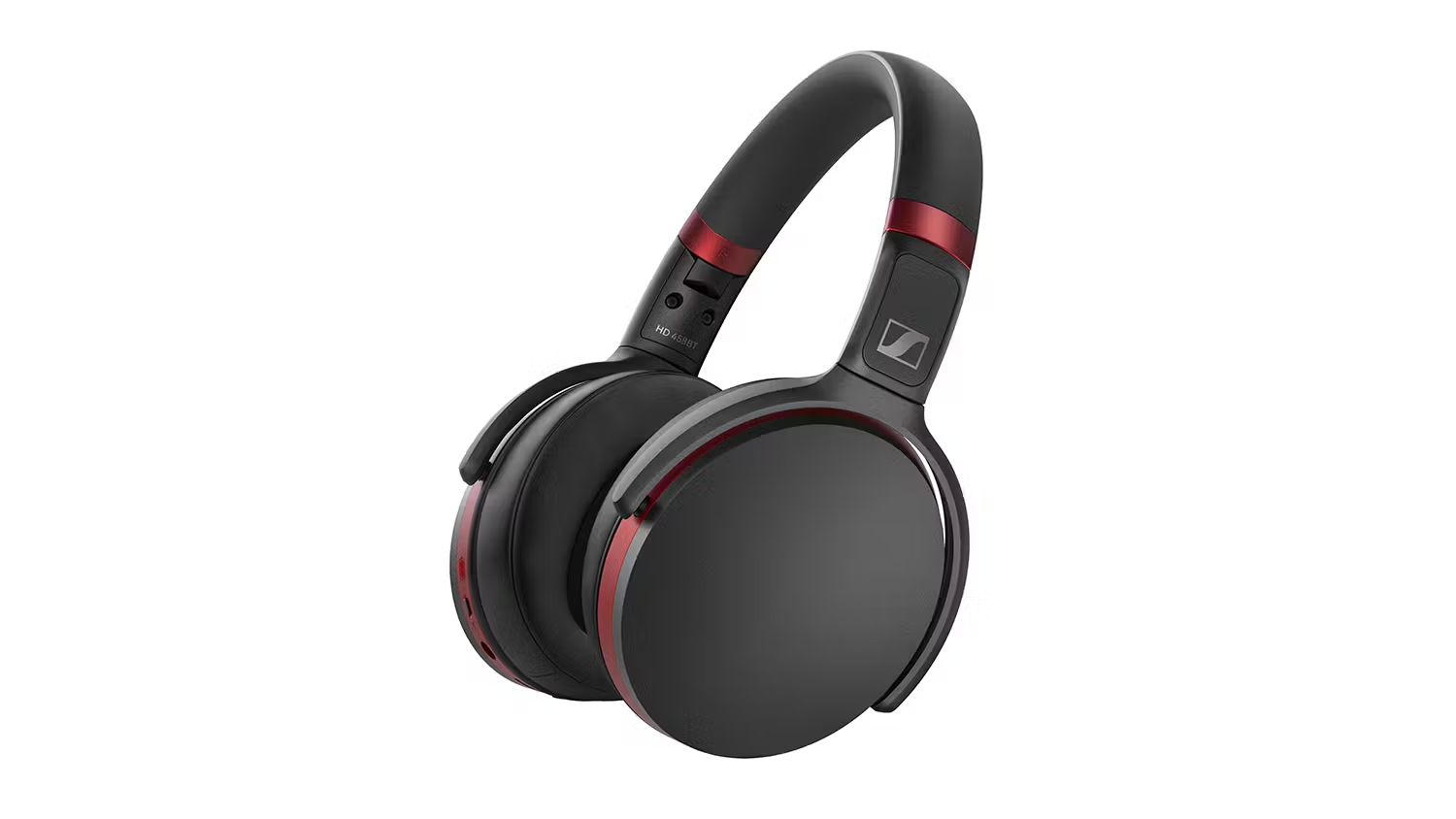Introduction
Noise cancelling headphones have become increasingly popular in recent years. They offer a way to enjoy music, movies, or podcasts without the distracting background noise that can often ruin the listening experience. But how do these headphones actually work? How can they selectively block out unwanted noise while still allowing you to hear the audio you want?
In this article, we will explore the fascinating technology behind noise cancelling headphones and uncover the secrets of their functionality. We will delve into the different types of noise cancellation, the inner workings of these headphones, and the benefits and drawbacks of using them.
Before we dive into the details, let’s first understand what exactly noise cancellation is. Noise cancellation is a method used to reduce or eliminate unwanted sounds by creating “anti-noise” that cancels out the original sound waves. It is based on the principle of destructive interference, where two sound waves of equal amplitude but opposite phases cancel each other out.
So, how does this technology apply to headphones? Noise cancelling headphones are designed to actively reduce external noise and provide a more immersive and enjoyable listening experience. They achieve this through a combination of advanced circuitry, microphones, and digital signal processing.
In the following sections, we will explore the specific mechanisms behind the operation of noise cancelling headphones, including the role of microphones, the function of DSP, and the generation of anti-noise. We will also discuss the sound quality of these headphones and evaluate their effectiveness in different environments.
Now, let’s delve into the world of noise cancelling headphones and unravel the science behind their incredible ability to block out the noise around us.
What is noise cancellation?
Noise cancellation is a technique used to reduce or eliminate unwanted sound by creating a counter-signal that cancels out the original sound waves. It is a process that aims to enhance the quality of audio by minimizing external noise interference. Whether you’re on a crowded train, working in a noisy office, or trying to relax in a bustling cafe, noise cancellation can help create a more immersive and enjoyable listening environment.
There are two main types of noise cancellation: active and passive. Let’s take a closer look at each:
- Active noise cancellation: Active noise cancellation is a technology that uses advanced electronic circuitry to generate counter-noise that cancels out external sounds. Active noise cancelling headphones have built-in microphones that pick up ambient noises and produce an opposite sound wave to cancel them out. This noise cancellation process is continuous and adaptive, monitoring the surrounding sound environment and adjusting accordingly to provide optimal noise reduction.
- Passive noise cancellation: Passive noise cancellation, also known as noise isolation, relies on physical elements of the headphone design to block out external noise. It involves creating a physical barrier between the ear and the ambient noise. This can be achieved through features such as earcup design, cushioning, and materials used. While passive noise cancellation is effective to some extent, it is generally not as powerful as active noise cancellation in blocking out low-frequency noises.
Noise cancellation technology has greatly improved over the years, allowing for better cancellation of low-frequency sounds like engine noise, air conditioning hums, or the rumble of a train. However, it may not be as effective at cancelling out higher frequencies such as voices or sharp sounds.
It’s important to note that noise cancellation does not completely eliminate external noise. Instead, it significantly reduces the intensity of unwanted sounds, allowing the listener to focus on their preferred audio content without being disturbed.
In the following sections, we will dive deeper into the inner workings of noise cancelling headphones, exploring the components and mechanisms responsible for their impressive noise reduction capabilities.
Active vs Passive Noise Cancellation
When it comes to noise cancellation technology, there are two primary methods: active and passive noise cancellation. Each approach offers its own advantages and disadvantages, and understanding the differences between them can help you choose the right type of headphones for your needs.
Active Noise Cancellation:
Active noise cancellation (ANC) is a sophisticated technology that utilizes electronic circuitry to actively reduce external noise. ANC headphones are equipped with built-in microphones that detect incoming sounds. The headphones then generate an “anti-noise” signal with opposite sound waves to counteract and cancel out the unwanted noise.
One of the significant advantages of active noise cancellation is its ability to target and reduce low-frequency noise, such as engine rumble or droning sounds. This makes ANC headphones particularly effective in settings where there is a consistent background noise, such as during air travel or commuting. Additionally, the adaptive nature of active noise cancellation adjusts the strength of the anti-noise signal based on the ambient noise levels, providing a more customized and immersive listening experience.
However, active noise cancellation does have its limitations. It may not be as effective in blocking high-frequency sounds or sudden, sharp noises. In some cases, active noise cancellation can even introduce a slight hissing sound, although modern advancements have significantly minimized this issue.
Passive Noise Cancellation:
Passive noise cancellation, also known as noise isolation, relies on the physical design and materials of the headphones to block out external noise. Instead of generating counter-noise, passive noise cancellation aims to create a barrier between your ears and the ambient sounds.
Headphones with passive noise cancellation feature design elements that effectively seal the earcup against the ears. This tight seal, combined with cushioning and noise-reducing materials, prevents external noise from reaching the ears. The result is a reduction in sound transmission and a more immersive listening experience.
Passive noise cancellation is most effective in blocking higher-frequency sounds, such as voices, conversations, or loud office noises. It is a great option for individuals looking to minimize distractions in quieter environments.
However, it’s important to note that passive noise cancellation may not be as effective at reducing consistent low-frequency noises, such as the hum of an engine or the rumble of a train. For situations with continuous background noise, active noise cancellation is generally more effective.
Ultimately, the decision between active and passive noise cancellation depends on your specific needs and preferences. If you frequently find yourself in noisy environments, such as airplanes or busy city streets, active noise cancellation headphones may be the better option. On the other hand, if you primarily want to block out higher-frequency sounds in quieter settings, passive noise cancellation headphones can provide an excellent solution.
How do noise cancelling headphones work?
Noise cancelling headphones are designed to reduce or eliminate unwanted external noise, allowing you to enjoy your audio content without distractions. The technology behind these headphones involves a combination of components and processes that work together to create a more immersive listening experience.
The basic principle behind noise cancelling headphones is the generation of “anti-noise” that cancels out the incoming sound waves. This is achieved through a multi-step process:
- Microphones: Noise cancelling headphones are equipped with microphones that pick up the ambient sounds from the surrounding environment.
- Noise Cancellation Circuitry: These microphones send the captured sound signals to a noise cancellation circuitry within the headphones.
- Digital Signal Processing (DSP): The noise cancellation circuitry analyzes the incoming sound signals using digital signal processing techniques. It identifies the specific frequencies and characteristics of the unwanted noise.
- Anti-noise Generation: Based on the analysis, the headphones generate an “anti-noise” signal that is the exact opposite of the unwanted sound waves. This anti-noise signal is then combined with the original audio signal that you want to hear.
- Combined Audio Output: The combined audio output of the anti-noise and desired audio signals is then delivered to the headphones’ speakers, allowing you to hear your audio content while the unwanted noise is actively cancelled out.
This continuous process of capturing, analyzing, generating anti-noise, and delivering the combined audio output happens in real-time, allowing noise cancelling headphones to adapt to changing sound environments and optimize the noise cancellation effectiveness.
The effectiveness of noise cancellation can vary depending on the specific headphones and the external noise characteristics. Lower-frequency sounds, such as engine rumble or air conditioning hum, are generally easier to cancel out compared to higher-frequency sounds like voices or sharp noises.
It’s essential to note that noise cancelling headphones may not completely eliminate all external noise. They primarily focus on reducing steady, low-frequency noise that can be most disruptive to the listening experience. However, they may not be as effective at cancelling out sudden, high-frequency noises. Additionally, the quality of noise cancellation can vary between different headphone models, with some offering superior noise reduction capabilities compared to others.
Overall, noise cancelling headphones provide a remarkable technology that allows you to immerse yourself in your audio while reducing unwanted distractions from your environment.
The Anatomy of Noise Cancelling Headphones
Noise cancelling headphones are ingeniously designed to provide a superior listening experience by actively reducing or eliminating unwanted external noise. To understand how they achieve this, let’s explore the anatomy of noise cancelling headphones:
1. Ear Cups: The ear cups, or earpieces, are an integral part of noise cancelling headphones. They are typically designed to fully enclose the ears, creating a seal that helps block external noise. The ear cups are often padded for comfort and to enhance the passive noise reduction capabilities of the headphones.
2. Microphones: Noise cancelling headphones have built-in microphones strategically located on the external surface or inside the ear cups. These microphones capture the ambient sound from the surroundings, allowing the headphone’s noise cancellation technology to analyze and counteract the incoming noise waves.
3. Noise Cancellation Circuitry: The captured sound signals from the microphones are processed by the noise cancellation circuitry. This circuitry is responsible for analyzing the incoming noise, generating the anti-noise signal, and combining it with the desired audio signal.
4. Digital Signal Processing (DSP): Digital Signal Processing plays a crucial role in noise cancelling headphones. It involves the use of algorithms to analyze the characteristics of the captured sound signals, identify the unwanted noise frequencies, and generate the corresponding anti-noise signal. DSP helps to enhance and optimize the noise cancellation capabilities of the headphones.
5. Anti-Noise Generation: Based on the analysis performed by DSP, the noise cancelling headphones generate the anti-noise signal. This signal is designed to be an exact reverse of the unwanted sound waves, effectively cancelling them out when combined with the original audio signal.
6. Audio Drivers: The audio drivers, located within the ear cups, are responsible for converting the electrical audio signals into sound waves that can be heard by the listener. These drivers deliver the combined audio output, which consists of the desired audio and the canceling anti-noise signal, allowing you to enjoy your content without interference from external noise.
7. Battery: Since noise cancelling headphones require active processing and anti-noise generation, they are equipped with a built-in battery to power these functions. The battery life can vary depending on the specific model and usage, and it is important to ensure that the headphones are charged or have sufficient battery power for optimal noise cancellation performance.
By combining these key components, noise cancelling headphones can effectively reduce external noise and provide a more immersive and uninterrupted listening experience. The integration of advanced technology and ergonomic design makes noise cancelling headphones a popular choice for those seeking an enhanced audio experience in various environments.
Microphones and Noise Cancellation
Microphones play a crucial role in the noise cancellation process of headphones. By capturing the ambient sound from the surrounding environment, they provide the necessary input for the headphones’ noise cancellation technology to analyze and counteract the unwanted noise waves. Let’s take a closer look at how microphones contribute to effective noise cancellation:
1. Capturing Ambient Sound: Noise cancelling headphones are equipped with built-in microphones strategically placed on the outer surface or inside the ear cups. These microphones pick up the sound waves coming from the environment, including both the desired audio and unwanted noise.
2. Monitoring and Analysis: The captured sound signals are then sent to the noise cancellation circuitry within the headphones. The circuitry analyzes the incoming signals, distinguishing between the audio you want to hear and the external noise that needs to be canceled.
3. Identifying Unwanted Noise Frequencies: The noise cancellation circuitry, using complex algorithms, identifies the specific frequencies and characteristics of the unwanted noise. It distinguishes between the consistent, low-frequency noise (e.g., engine rumble) and other background sounds.
4. Generating Anti-Noise Signal: Once the unwanted noise is identified, the headphones generate an “anti-noise” signal that is the exact opposite of the unwanted sound waves. This anti-noise signal is designed to cancel out the unwanted noise when combined with the original audio signal.
5. Adaptive Noise Cancellation: The microphones continuously capture and monitor the ambient sound, allowing for real-time adjustment of the anti-noise signal. This adaptability helps the headphones optimize noise cancellation performance based on changes in the sound environment.
6. Feedback Mechanisms: Some noise cancelling headphones employ a feedback mechanism that uses the microphones to monitor the sound produced by the headphones themselves. This feedback allows the headphones to adjust the anti-noise signal more accurately, resulting in improved noise cancellation and audio quality.
Microphones are the essential sensory component of noise cancelling headphones. They provide the input for the noise cancellation circuitry to analyze and cancel out unwanted noise, allowing you to enjoy your audio content without distractions. The strategic placement of the microphones and their ability to capture the surrounding sound accurately are fundamental to the effectiveness of noise cancellation technology in headphones.
Noise Cancelling Circuitry
Noise cancelling circuitry is an integral part of noise cancelling headphones. It is responsible for processing the captured sound signals from the microphones, analyzing the characteristics of the noise, and generating the anti-noise signal. Let’s delve into the workings of the noise cancelling circuitry:
1. Signal Processing: The noise cancelling circuitry utilizes advanced signal processing techniques to analyze the incoming sound signals. It applies mathematical algorithms to identify the specific frequencies, amplitudes, and phases of the unwanted noise present in the captured audio signals.
2. Frequency Filtering: The circuitry employs filters to isolate and focus on the frequencies associated with the unwanted noise. By targeting these specific frequencies, the noise cancelling circuitry can generate an anti-noise signal that effectively cancels out the unwanted noise.
3. Anti-Noise Generation: Based on the analysis of the unwanted noise frequencies, the circuitry generates an anti-noise signal that is the exact opposite of the unwanted sound waves. This anti-noise signal is designed to destructively interfere with the unwanted noise, resulting in its cancellation when combined with the original audio signal.
4. Adaptive Noise Cancellation: Advanced noise cancelling headphones employ adaptive noise cancellation algorithms within their circuitry. These algorithms continuously monitor the incoming sound signals and dynamically adjust the characteristics of the anti-noise signal to optimize the noise cancellation performance. This adaptive approach ensures effective noise reduction in various environments and situations.
5. Power Management: The noise cancelling circuitry in headphones requires power to perform its computations and generate the anti-noise signal. Noise cancelling headphones typically have a built-in battery or draw power from an external source to supply the necessary energy for the circuitry to operate.
6. Feedback Mechanisms: Some noise cancelling headphones incorporate feedback mechanisms within their circuitry. These mechanisms use the microphones to monitor the sound produced by the headphones themselves. This feedback provides the circuitry with real-time information about the effectiveness of the noise cancellation, enabling adjustments to be made for improved performance and audio quality.
Noise cancelling circuitry is a highly sophisticated and crucial component of noise cancelling headphones. Its ability to analyze incoming sound signals, identify unwanted noise, generate anti-noise, and adapt to dynamic sound environments plays a significant role in providing an enhanced listening experience with reduced external noise distractions.
The Role of Digital Signal Processing (DSP)
Digital Signal Processing (DSP) is a key technology in noise cancelling headphones, responsible for analyzing and manipulating audio signals to enhance the noise cancellation capabilities. DSP plays a vital role in optimizing the performance and effectiveness of noise cancellation. Let’s explore the various aspects of DSP in noise cancelling headphones:
1. Signal Analysis: DSP algorithms are employed to analyze the characteristics of the incoming audio signals. This analysis helps identify the specific frequencies, amplitudes, and phases of both the desired audio and the unwanted noise.
2. Noise Identification: With the information obtained through signal analysis, DSP algorithms can differentiate between the desired audio and the unwanted noise. This ability to distinguish between the two allows the headphones to effectively target and attenuate the unwanted noise while preserving the desired audio.
3. Generation of Anti-Noise: DSP algorithms generate an anti-noise signal that is designed to cancel out the unwanted noise. By generating an anti-noise waveform that is the exact reverse of the identified noise components, DSP aids in achieving destructive interference, effectively reducing the noise reaching the listener’s ears.
4. Adaptive Noise Cancellation: DSP enables adaptive noise cancellation by continuously monitoring the incoming audio signals. The algorithms can rapidly adapt the characteristics of the anti-noise signal based on changes in the noise environment. This adaptability ensures optimal noise cancellation performance in real-time, regardless of the surrounding noise conditions.
5. Filtering and Equalization: DSP algorithms can apply various filtering and equalization techniques to tailor the audio output. These algorithms can modify the frequency response of the headphones to enhance the audio quality and compensate for any sound distortions caused by the noise cancellation process.
6. Energy Optimization: DSP algorithms help optimize the energy consumption of noise cancelling headphones. By implementing efficient processing techniques, DSP can minimize power requirements without sacrificing the overall noise cancellation performance, ensuring an optimal balance between battery life and effective noise reduction.
7. Integration with Feedback Systems: DSP algorithms can be integrated with feedback systems that use internal microphones to monitor the headphone’s performance in canceling out noise. This integration allows for real-time adjustments and continuous improvement of noise cancellation effectiveness.
The role of DSP in noise cancelling headphones is vital in achieving accurate noise analysis, generating anti-noise signals, adapting to changing noise environments, and optimizing the overall audio experience. It is this advanced digital processing technology that enables noise cancelling headphones to provide a more immersive and enjoyable listening experience by reducing unwanted external noise.
Anti-Noise Generation
Anti-noise generation is a fundamental process in noise cancelling headphones that plays a crucial role in canceling out unwanted external noise. By generating an anti-noise signal, noise cancelling headphones produce sound waves that are the exact reverse of the incoming noise, resulting in destructive interference and a reduction in overall noise. Let’s explore how anti-noise generation works:
1. Waveform Mirroring: The process of generating anti-noise begins by mirroring the waveform of the incoming noise. This involves analyzing the amplitude, frequency, and phase of the noise signal and creating a mirrored waveform with equal but opposite characteristics.
2. Real-Time Adaptation: Anti-noise generation occurs in real-time, constantly adjusting to changes in the surrounding noise environment. As the noise changes, the anti-noise signal is continuously updated to ensure effective noise cancellation at all times. This adaptability helps maintain the optimal cancellation performance regardless of variations in ambient noise conditions.
3. Precise Timing and Synchronization: To achieve destructive interference, it is critical that the anti-noise signal is perfectly synchronized with the original noise. The timing and synchronization between the incoming noise and anti-noise signals are carefully controlled to ensure cancellation occurs at the listener’s ears.
4. Elimination of Audible Artifacts: When generating the anti-noise signal, special care is taken to eliminate any audible artifacts or distortions. The anti-noise signal is designed to cancel out the unwanted noise without introducing any noticeable audio artifacts that could affect the quality of the desired audio content.
5. Frequency-Specific Generation: Different noise frequencies require different anti-noise characteristics for effective cancellation. Modern noise cancelling headphones employ advanced algorithms that generate anti-noise signals tailored to specific frequency bands, enabling more precise cancellation across a range of frequencies.
6. Combining Anti-Noise and Desired Audio: The anti-noise signal and the desired audio signal are combined to create the final output. The anti-noise is superimposed on the desired audio, allowing the listener to enjoy their chosen content while the unwanted noise is actively canceled out.
By generating an anti-noise signal that is the reverse of the incoming noise, noise cancelling headphones create destructive interference, effectively reducing the overall noise level. This process, combined with the ability to adapt to changing noise conditions and precise synchronization, enables noise cancelling headphones to provide a more immersive and uninterrupted listening experience.
Sound Quality and Noise Cancellation
When considering noise cancelling headphones, one important aspect to consider is how noise cancellation technology affects the overall sound quality. While noise cancellation aims to reduce or eliminate unwanted external noise, it is essential to understand its impact on the audio experience:
1. Audio Clarity: Noise cancelling headphones generally offer excellent audio clarity. By reducing external noise, they allow the listener to focus on the desired audio content, resulting in a more immersive experience. With fewer distractions, details in the music, dialogue, or other audio elements can be more easily heard and appreciated.
2. Balanced Sound: Noise cancellation technology is designed to minimize specific frequencies associated with environmental noise. High-quality noise cancelling headphones strive to balance the elimination of unwanted noise with preserving the audio frequencies intended for listening. This balance ensures that the desired audio is not compromised or distorted due to the noise cancellation process.
3. Bass Response: Noise cancelling headphones can provide enhanced bass response, particularly in environments where low-frequency noise is prevalent. By reducing the low-frequency noise, the headphones create a more immersive bass experience, allowing listeners to enjoy deep, rich sounds without the interference of external disturbances.
4. Impact on Higher Frequencies: While noise cancellation technology excels at reducing low-frequency noise, such as engine rumble or background hum, its effectiveness in canceling higher frequencies can vary. This means that noise cancelling headphones may not provide as significant a reduction in high-frequency sounds like voices or sharp noises. However, the overall impact on higher frequencies can still be noticeable due to the reduced masking effect of unwanted noise.
5. Audio Artifacts: In some cases, the noise cancellation process can introduce slight audio artifacts or hissing sounds. While modern noise cancelling headphones are designed to minimize these, they may still be present to some extent, particularly in scenarios where noise cancellation technology is pushed to its limits. However, the impact of these artifacts is typically minimal and often overshadowed by the benefits of noise reduction.
6. Source Quality: It is worth noting that the overall sound quality of noise cancelling headphones may also depend on the quality of the audio source itself. Even the most advanced noise cancelling technology cannot compensate for low-quality audio recordings, so it is recommended to use high-quality audio files or streams to maximize the audio experience.
Enabling users to enjoy their audio content without disruptive external noise, noise cancelling headphones can provide a significantly improved listening experience. While there may be some minor trade-offs or considerations, the enhanced audio clarity and balanced sound make noise cancellation technology a valuable feature for many users.
How Effective Are Noise Cancelling Headphones?
Noise cancelling headphones have gained popularity due to their ability to reduce or eliminate unwanted external noise. But how effective are they really? Let’s explore the effectiveness of noise cancelling headphones:
1. Noise Reduction: Noise cancelling headphones can significantly reduce the overall level of external noise. They are particularly effective in reducing constant, low-frequency sounds like engine rumble, air conditioning hum, or background noise in public spaces. By generating anti-noise signals that cancel out these frequencies, noise cancelling headphones provide a more peaceful listening environment.
2. Focus on Specific Frequencies: Noise cancellation technology is most effective against lower-frequency sounds. The ability to cancel out high-frequency sounds, such as voices or sudden loud noises, can vary. However, even in the case of higher frequencies, noise cancelling headphones can still provide a reduction or masking effect, allowing users to focus on their audio content without as much interference from the environment.
3. Room for Improvement: While noise cancelling headphones can be highly effective, they are not a magical solution that completely eliminates all noise. The efficiency of noise cancellation varies depending on the model and the specific environmental noise being targeted. Factors such as fit, quality of noise cancellation circuitry, and the overall design of the headphones can impact their effectiveness.
4. Ambient Noise: Noise cancelling headphones are typically more effective at reducing continuous, constant noise as opposed to transient or variable noise. Sudden, sharp noises may still be audible to some extent, but the overall masking effect of noise cancellation can still make them less distracting. However, it is important to manage expectations and understand that noise cancelling headphones may not completely eliminate all types of noise.
5. Personalized Experience: The effectiveness of noise cancelling headphones can also vary from person to person. Factors such as individual sensitivity to noise, personal audio preferences, and the fit of the headphones can influence the perceived effectiveness of noise cancellation. It is recommended to try different models and find the one that suits your specific needs and preferences.
6. Combined with Passive Noise Isolation: Noise cancelling headphones can be complemented by passive noise isolation, which involves physical elements of the headphone design blocking out external noise. By combining active noise cancellation with passive noise isolation, users can enjoy an even greater reduction in external noise and a more immersive audio experience.
While noise cancelling headphones are highly effective at reducing certain types of external noise, it is important to be aware of their limitations. They provide a significant improvement in the listening experience by mitigating distractions and allowing users to focus on their preferred audio content. However, users should understand that noise cancelling headphones may not completely eliminate all noise and that their effectiveness can vary depending on the specific conditions and environmental factors.
Benefits and Drawbacks of Noise Cancelling Headphones
Noise cancelling headphones offer several benefits that enhance the listening experience in various situations. However, there are also some drawbacks to consider. Let’s explore the benefits and drawbacks of noise cancelling headphones:
Benefits:
- Noise Reduction: The primary advantage of noise cancelling headphones is their ability to reduce or eliminate external noise. They provide a more peaceful and immersive listening experience by mitigating distractions and allowing users to focus on their audio content.
- Improved Audio Clarity: By blocking out unwanted noise, noise cancelling headphones enhance audio clarity. It becomes easier to hear and appreciate the details in music, dialogue, or other audio elements without the interference of external disturbances.
- Enhanced Concentration: Noise cancelling headphones can improve concentration in environments with high levels of background noise. They are beneficial for students, professionals working in open-plan offices, or individuals who need to focus on their tasks without being disturbed.
- Reduced Fatigue: Continuous exposure to loud or unexpected noises can be physically and mentally tiring. Noise cancelling headphones help reduce the fatigue associated with such noise exposure by creating a more comfortable listening space.
- Travel Comfort: Noise cancelling headphones are particularly useful during travel, whether on airplanes, trains, or buses. They minimize the noise from engines and other passengers, allowing for a more enjoyable and relaxing journey.
Drawbacks:
- Price: Noise cancelling headphones can be more expensive compared to regular headphones. The advanced technology and additional features contribute to the higher price point.
- Battery Dependency: Active noise cancellation requires power, which means noise cancelling headphones rely on batteries or built-in rechargeable batteries. It’s important to ensure the headphones are adequately charged or have access to a power source to maintain noise cancellation functionality.
- Audio Artifacts: In some cases, noise cancellation technology can introduce slight audio artifacts, such as a hissing sound. Although modern advancements have significantly minimized this, there may still be some perceptible artifacts, especially in quieter environments.
- Less Effective for High-Frequency Noise: Noise cancelling headphones may not provide as significant noise reduction for high-frequency sound, such as voices or sudden, sharp noises. While there will still be some reduction, the primary strength of noise cancellation lies in mitigating continuous, low-frequency sounds.
- Fit and Comfort: Finding the right fit and comfort level for noise cancelling headphones is essential. Poorly fitting headphones can undermine the effectiveness of noise cancellation and lead to discomfort during extended use.
Despite the drawbacks, the benefits of noise cancelling headphones, such as improved audio clarity, noise reduction, and increased concentration, make them a valuable tool for many individuals seeking a more immersive and uninterrupted listening experience.
Conclusion
Noise cancelling headphones have revolutionized the way we experience audio in noisy environments. By actively reducing or eliminating unwanted external noise, these headphones provide a more immersive, focused, and enjoyable listening experience. They achieve this through a combination of advanced technologies, including microphones, noise cancellation circuitry, and digital signal processing.
Active noise cancellation, in particular, has become increasingly sophisticated, adapting to changes in the sound environment and targeting specific frequencies associated with unwanted noise. By generating anti-noise signals that cancel out the incoming noise, noise cancelling headphones create a more peaceful listening space where the desired audio can be appreciated without distractions.
While noise cancelling headphones offer numerous benefits, it’s essential to understand their limitations. They may not completely eliminate all types of noise, and their effectiveness can vary depending on the specific environmental conditions and the individual’s preferences. It’s crucial to find the right fit and consider factors such as audio quality, comfort, and battery life when choosing noise cancelling headphones.
Ultimately, noise cancelling headphones provide a valuable tool for individuals who seek to enhance their audio experience, whether for music, movies, or work. They offer improved audio clarity, reduced fatigue, enhanced concentration, and a more enjoyable travel experience. While they may come with a few drawbacks, the benefits of noise cancelling headphones make them a worthwhile investment for those who value high-quality audio and a more serene listening environment.







